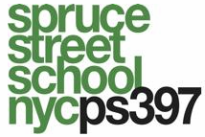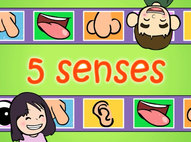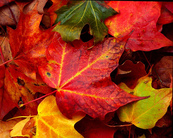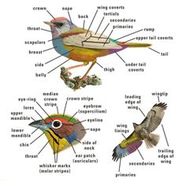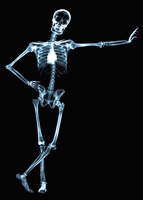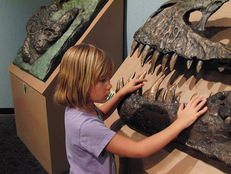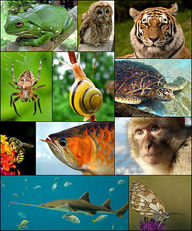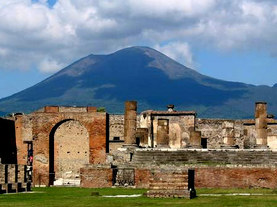Spruce Street Science
Students at every grade level are currently engaging in Science Launch units designed to acquaint students with the routines of scientific inquiry and become familiar with the use and location of materials in the science lab. High-interest topics that allow for creative, hands-on activities were selected for the launch units in order to engage student imaginations and get them excited about science. Grades 3-5 are using Science Journals to record their thinking, predictions and knowledge. Year long journal work is designed to foster literacy objectives from the Common Core in the Science Classroom.
|
|
|
Grade 1: Bird Study: Students have learned about the features of birds, including the types of feathers, the use of camouflage and mating plumage, the purpose behind various beak and feet shapes, and the shape of various wings for gliding, lifting prey and swift direction change. Students observed real bird nests to discover the complexity of construction and identify materials that birds use in nest building. Students created individual flight feathers from paper and straws and assembled three large wings that are on display on the 4th floor bulletin boards. Students also learned about the dangers and challenges that birds face when migrating by participating in a Migration Obstacle Course. |
|
Grade 2: Bone and Skeleton Study - Students have been learning the location, purpose and names of many bones in the human body. They have used diagrams, a full-sized human skeleton and non-fiction books to learn about the skeletal system and various types of joints. Students created a paper skeleton with hinge, ball & socket and vertebrae joints. |
|
Grade 3: Fossil Study - Students have been exploring fossils by observing and sorting real fossil kits. Students have learned the difference between organic and inorganic materials and know which natural materials can become fossilized. They have explored the abstract concept of how fossils are formed over millions of years. They have researched several dinosaurs from non-fiction books. Culminating Project: Students will create a simulated fossil bed complete with a dinosaur skeleton, faux amber and fossil impressions. Students will then teach and guide younger students through a make-believe fossil dig using trowels and brushes.
|
|
Grade 4: Zoology Study - Students are learning about the classification of animals by physical and behavioral characteristics. They have learned about the 7 classifications of all living things: Kingdom, Phylum, Class, Order, Family, Genus & Species. Students have learned about the large kingdoms of animals and the characteristics of the more specific families of animals, as well as the Latin names given to them. Students have matched and sorted various animals into families based on shared characteristics and definitions. Students researched a favorite family of animals from non-fiction books. Culminating Project: Students will assemble an 8-foot “Tree of Life” with information and images of the 20+ animal families we learned about and place them in ascending order of complexity.
|
|
Grade 5: Archaeology Study - Students are creating fictitious ancient civilizations in small groups. They have discussed, sketched and written about the various aspects of their ancient societies. They selected habitats, climates, natural resources, and home styles for their ancient culture based on knowledge of the ways in which actual ancient civilizations lived. They planned arts & crafts, clothing, jobs, religions, governments, and public buildings. The students also created an imaginary “Rosetta Stone” language decoder for the phonetic symbols they designed for their ancient writing. Based upon their plans each student will create an artifact representing their ancient culture. These will be buried in dry sand or soil. Culminating Project: Archaeological Excavation- Students will unearth the artifacts from another 5th grade class and infer the use or importance of each artifact. They will write up a description of the society based upon the artifact clues and by translating the “Rosetta Stone” writing left behind. Student will be able to compare their interpretation of the artifacts against the actual plan that the group made.
|
Once these Science Launch Units have finished, science education will transition to safe, hands on experiments designed by the FOSS Curriculum that comply with CCS, STEM and NYS Scope and Sequence Science Standards. The focus will be on scientific observation, the scientific method, collecting and analyzing data, making predictions and testing theories. The next update will outline the FOSS units for each grade.
Useful Resources
Connect A Million Minds: Time Warner's effort to promote STEM Education (Readiness for careers in Science, Technology, Engineering & Math) in New York State.
They offer support for students, parents and educators to inspire scientific thinking at home and in school. Also, watch episodes of "It Ain't Rocket Science" on Time Warner Channel 1 (Channel 1020 On-Demand) with your student.
BBC Earth: Programming and video clips that explore the diversity of life on earth.
PBS Kids: Online games and programming information that support elementary science all age ranges (grades K-5)
They offer support for students, parents and educators to inspire scientific thinking at home and in school. Also, watch episodes of "It Ain't Rocket Science" on Time Warner Channel 1 (Channel 1020 On-Demand) with your student.
BBC Earth: Programming and video clips that explore the diversity of life on earth.
PBS Kids: Online games and programming information that support elementary science all age ranges (grades K-5)
